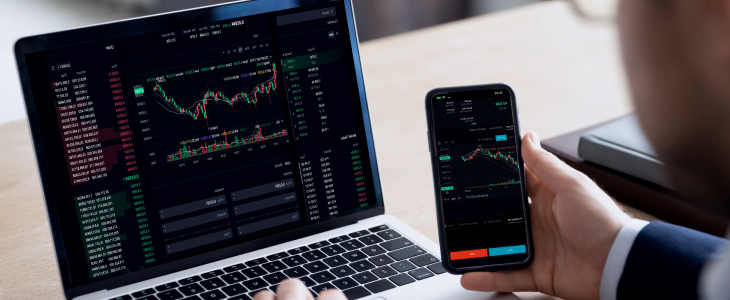
Understanding Forex Trading Accounts: A Comprehensive Guide
Forex trading, or foreign exchange trading, has gained immense popularity in recent years. Many individuals and institutions are exploring this exciting market to diversify their investment portfolios. One of the first steps to enter this market is opening a forex trading account Trading Brokers account, which serves as your gateway to buying and selling currencies. In this article, we delve into the various aspects of Forex trading accounts, helping you understand their types, features, and how to choose the right broker.
What is a Forex Trading Account?
A Forex trading account is a specialized account provided by brokers that allows traders to engage in the buying and selling of currency pairs. These accounts are essential for anyone looking to trade in the foreign exchange market, as they provide the necessary platform for executing trades, accessing market analysis, and utilizing trading tools. Depending on the broker, these accounts may offer additional features like leverage, margin trading, and risk management tools.
Types of Forex Trading Accounts
Forex brokers typically offer several types of trading accounts to cater to different needs and trading styles. Below, we outline the most common types of Forex trading accounts.
1. Demo Accounts
Demo accounts are practice accounts that allow traders to engage in simulated trading without risking real money. They typically come with virtual currency, enabling newcomers to learn the ropes of Forex trading, understand the trading platform, and develop strategies before moving on to live trading. Most brokers offer demo accounts for a limited time, usually ranging from 30 days to several months.
2. Standard Accounts
Standard accounts are the most common type of Forex trading accounts. They usually require a minimum deposit, which varies by broker but often starts from $100. These accounts provide full access to trading features, including leverage and various analytical tools. Traders using standard accounts usually trade with standard lot sizes, which are typically 100,000 units of the base currency.
3. Mini Accounts

Mini accounts are designed for traders who may not want to invest significant capital upfront. They require lower minimum deposits and are suitable for those looking to trade in smaller amounts. A mini account typically allows trading with mini lots, which represent 10,000 units of the base currency. This type of account is ideal for novice traders who wish to manage risk while gaining experience.
4. Micro Accounts
Micro accounts are similar to mini accounts but take it one step further by allowing traders to trade with micro lots, which are 1,000 units of the base currency. This account type is perfect for beginners who want to test their strategies without committing significant amounts of money. The lower risk associated with micro accounts enables new traders to learn and adapt to the Forex market dynamics.
5. Managed Accounts
Managed accounts are tailored for investors who prefer to take a hands-off approach to Forex trading. In this setup, traders can hire portfolio managers or investment firms to handle their trading activities on their behalf. Managed accounts offer the advantage of professional management but may come with additional fees.
Choosing the Right Forex Broker
Selecting the right Forex broker is crucial for successful trading. Here are some factors to consider when choosing a broker:
1. Regulation and Licensing
Ensure that the broker is regulated by a reputable financial authority. Regulation helps protect your funds and provides a level of assurance that the broker operates fairly and transparently.
2. Trading Platform
The trading platform is your primary interface for executing trades, so it’s vital to choose a broker that offers a user-friendly and reliable platform. Popular platforms like MetaTrader 4 and MetaTrader 5 provide excellent tools for analysis and trading.
3. Spreads and Commission
Look for brokers with competitive spreads and transparent commission structures. Lower trading costs can significantly enhance your profitability over time.

4. Customer Support
Good customer support is essential, especially for novice traders or those facing technical issues. Check the support channels offered (live chat, email, phone) and their availability.
5. Account Types and Leverage
Make sure that the broker offers an account type that suits your trading style and capital. Additionally, understand the leverage options available, as high leverage can amplify both gains and losses.
Opening a Forex Trading Account
Once you’ve chosen a suitable broker and account type, the process of opening a Forex trading account is straightforward. Here’s a step-by-step guide:
1. Fill Out the Application
Visit the broker’s website and complete the online application form. This typically requires providing personal information such as your name, address, date of birth, and contact information.
2. Provide Identification
Most brokers will require you to submit identification documents as part of the Know Your Customer (KYC) regulations. Commonly accepted documents include a government-issued ID and proof of address (utility bill, bank statement).
3. Fund Your Account
After your application is approved, you can fund your account using various payment methods such as bank transfer, credit/debit cards, or electronic wallets. Ensure you understand the broker’s funding policies, including any fees or minimum deposit requirements.
4. Start Trading
Once your account is funded, you can start trading. Take your time to familiarize yourself with the trading platform and start with simple strategies that suit your risk tolerance.
Conclusion
In conclusion, understanding Forex trading accounts is fundamental for anyone looking to engage in the foreign exchange market. By recognizing the various account types, selecting the right broker, and following a systematic approach to trading, you can enhance your chances of success in this dynamic market. Whether you choose a demo account to start or opt for a standard account to engage fully in trading, be sure to educate yourself continuously and adapt to market changes. Happy trading!
